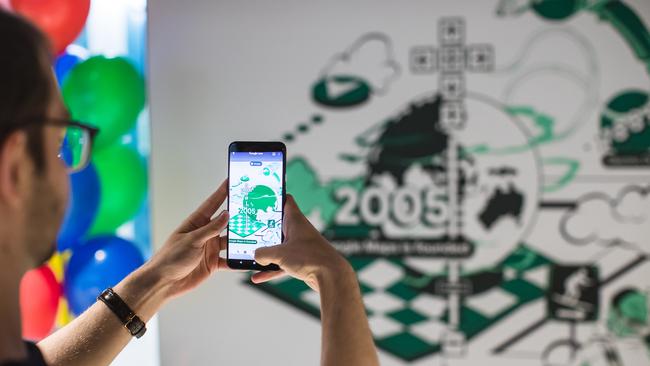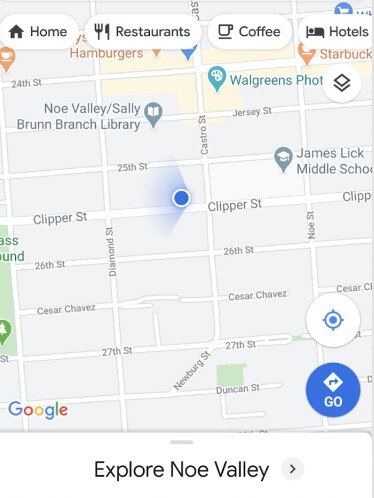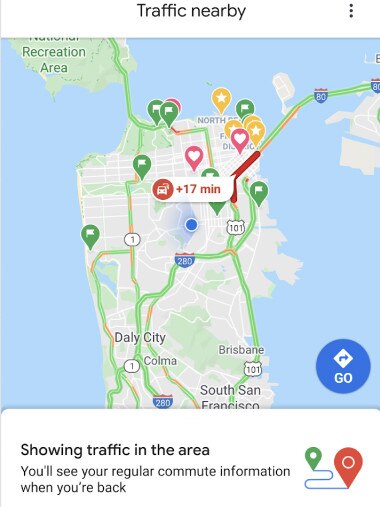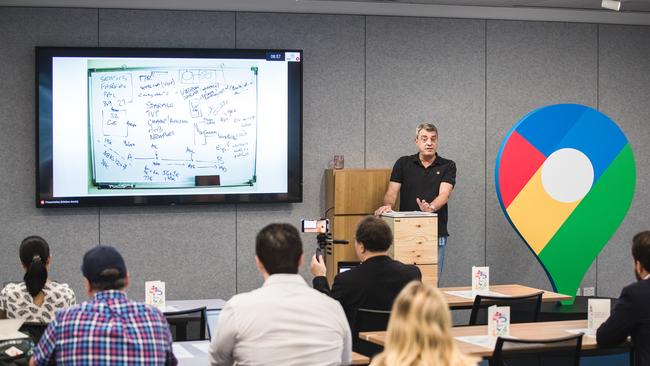Google celebrates 15 years of Maps and rolls out updates
Some old whiteboard doodles are the origin of a service now used by more than a billion people monthly.

These whiteboard doodles are the origin of a service now used by more than a billion people each month. That service is available now in more than 220 countries.
The whiteboard displays some of the original technicalities being thrashed 15 years ago when Google Maps was first being conceived.
In the early days, much of Google Maps was built in Sydney and at a media event held on Wednesday, Noel Gordon, co-founder of the service, showed a snapshot taken from a white board in around 2004.

He says 10 million people used Google Maps on its first day. At that stage, the service was confined to North America. He says you originally had to print out maps that you wanted to take with you.
A few months later the tech giant launched Google Earth and two years later, its Street View service, where you could place yourself on the map, and look down the roads and view buildings surrounding you at that point.
Maps went mobile in late 2007 and navigation was added in 2009.
It’s latest major addition has been Live View, which uses augmented reality to superimpose direction signs displayed ahead of you, which you see when you look through the phone’s display.

The trip down memory lane was part of Google Maps’ 15th birthday celebration in Sydney.
The company says it has been working on updates to Google Maps for iOS and Android, and they were rolling out immediately. At this stage the features apply only to the mobile apps, and not the web version of Google Maps.
The new look app includes five tabs, each dedicated to a function. If you happen to arrive in a new part of town and are unfamiliar with the cafes, restaurants and services there, you can hit the “explore” tab to see lunch options, music venues, games venues, ratings and reviews.
There’s a tab for An expanded commuting service. Google says it not only offers the most efficient route, but also real-time traffic updates, travel times and suggested alternative routes. Google says the new commute will handle commuting on multiple modes of transport.

There’s a tab dedicated to places you have saved. These could be favourite restaurants and cafes from all over the place. They’ll now be available from one location. You’ll be able to more easily share recommendations based on which venues you liked before. Google says people have saved more than 6.5 billion places on Google Maps.
The tab labelled “contribute” lets you provide information to Google that it can use to update maps. That could include details about local roads and addresses, missing places, photos, and business reviews. User contributions opens the prospect of people providing false information. Google says it has a team available to vet incoming information. It seems unimaginable that it can check the lot.
The “updates” tab display spots recommended by “experts” and “publishers”.
Google foreshadowed Maps handling more complex queries such as “which pizza shop is on my way home”, or “which pizza shop is open now”, or “is not crowded?”.

It says that over the coming months, the Live View feature on Maps will be expanded to offer better assistance when you are searching for a place. You’ll be able to quickly see how far away and in which direction that place is.
Google says it has now mapped 220 countries and territories and added 150 million places and businesses on its maps. It offered driving directions over more than 55 million kilometres of road, and says more than a billion kilometres is driven daily with Google Maps. More than a billion people access Google Maps each month.


